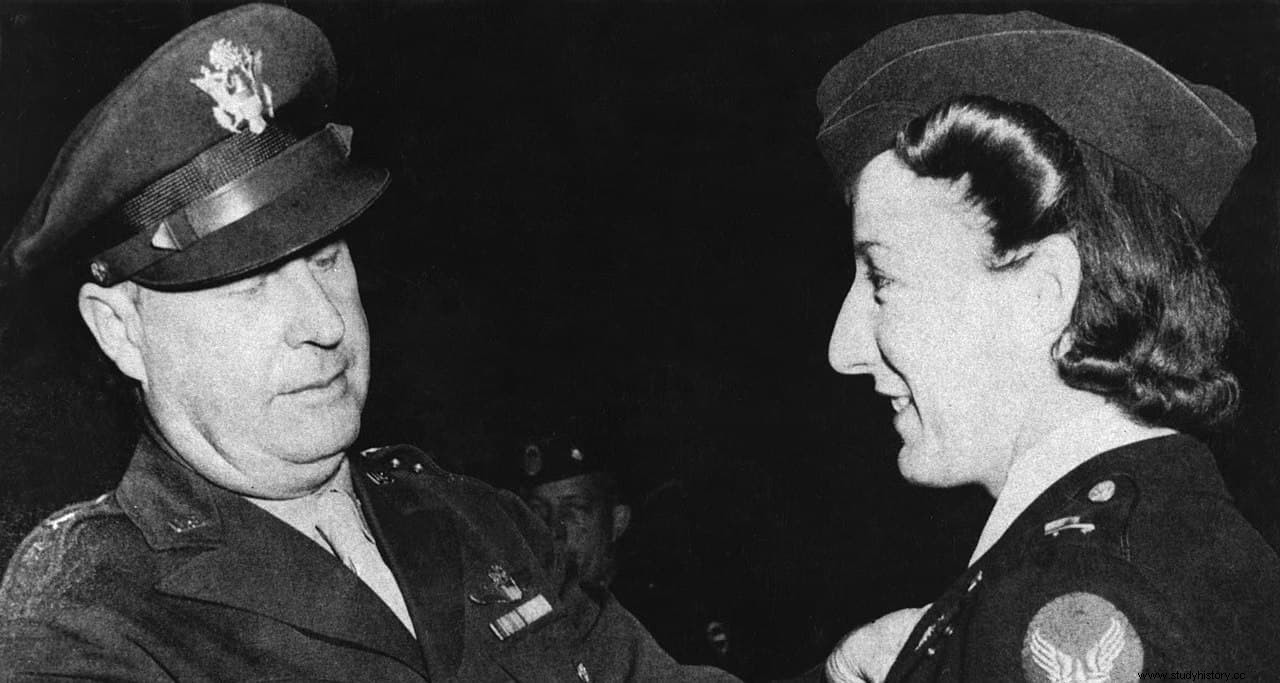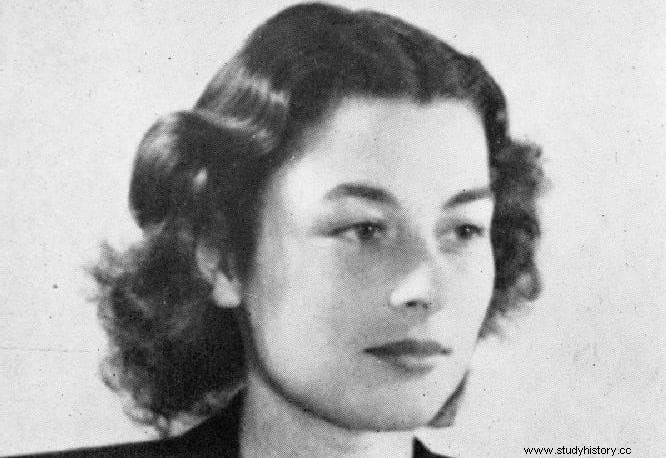The history of the Second World War is full of heroic actions carried out by men and women, often little known but whose work was essential in the discourse of war.
Women actively participated in virtually all aspects of the conflict, both military and civilian. For example, the British intelligence service (SOE) had 55 female members, of whom 13 were killed in action.
There were also women soldiers and pilots who participated in war actions and bombings. And more than 59,000 nurses participated in World War II, of which more than 200 died. In the Pacific alone, 70 were captured by the Japanese in 1942 and held prisoner for 3 and a half years.
For Operation Overlord the nurses received military training. They were taught how to get on a boat using a rope, jump on boats, parade, cross barbed wire and barricades, and self-defense. On D-Day they shed their traditional headdresses and donned military uniforms and boots.
It does not appear that any nurses participated in the operation on D-Day itself, but they would arrive four days later, disembarking under fire from German snipers.
These are some of those women who became heroines.
1. Virginia Hall
Virginia Hall was, according to the Gestapo itself, the most dangerous of the allied spies . She was an American, she worked for the British SOE (Special Operations Executive), becoming the first operative allied spy in occupied France. She hid out in Lyon for two years as a correspondent for the New York Post. Once the allies landed in North Africa she crossed the Pyrenees on foot to Spain, where she was imprisoned in Figueres. Once released, she moves to Madrid, where she continues her work.

Once the United States enters the war, she joins the OSS (Office of Strategic Services), the predecessor of the CIA, and she is sent back to France aboard a submarine. There she arms and trains three resistance battalions, who manage to destroy four bridges, sabotage railway and telephone lines and capture more than 500 German soldiers.
She was never captured by the Nazis. Oh, and several years before she became a spy she had lost her leg in a car accident, so she was wearing an artificial leg.
2. Lillian Gutteridge
Lillian Gutteridge was a British nurse who participated in the evacuation of the Allied armies at Dunkirk. She was one of the last nurses to leave France. Her ambulance was stopped by an SS officer who ordered her to hand over the wounded she was carrying. Lillian slapped the officer, who responded by sticking a knife into her thigh. Before things got worse, the officer was shot down by soldiers from the retreating Scottish Black Watch regiment. Despite Lillian's injury, she drove the ambulance to the French railway headed for Cherbourg. Along the way she picked up another 600 wounded French and British soldiers. Days later she managed to get to England with her patients.
3. Susan Travers
The only woman in the French Foreign Legion at the time the war broke out, Travers was in Bir Hakeim, Libya, when Free French forces were surrounded by the Germans.

She refused to be evacuated with the rest of the women and remained under siege for 15 days, until the situation became untenable. She, getting behind the wheel of a truck, managed to cross the German encirclement and lead the 2,500 encircled French soldiers to the Allied lines, acting as a shield.
4. The Czech nurse who poisoned the Nazis
A couple of years ago, the Czech town of Trebon unveiled a commemorative plaque for a nurse (whose name is unknown), who poisoned several German soldiers after the German annexation of Czechoslovakia. For this, she became her lover, and according to the stories that have been transmitted orally, after being with her they used to die or disappear. She was eventually executed by a Gestapo agent sent to investigate the matter.
5. Violette Szabo
When her husband Etienne Szabo, an officer in the French Foreign Legion, was killed in action, Violette was recruited by the British SOE and sent to France as a spy in April 1944. There she organized a resistance unit, sabotaged bridges and roads, and sent reports to London. She was arrested twice, but both times she managed to escape.

Sent back to France a few days after the Normandy landings she was intercepted at a roadblock along with her partisan companion. Getting out of her car, Violette opened fire on the German soldiers, and she kept firing until her partner managed to run away.
Interrogated and tortured, they were unable to make her talk about her. She was transferred to the Ravensbrück concentration camp in August 1944, where she made several unsuccessful escape attempts. In January 1945 she was executed by an SS officer. Her story is told in the 1958 film Secret Agent SZ.
6. Augusta Chiwy
Augusta Chiwy was a Belgian-Congolese nurse who volunteered to serve in the Bastogne field hospital during the Battle of the Bulge. At that time there was only one doctor treating the American wounded.

Augusta walked the battlefield collecting the wounded, under enemy fire. In 2011, at the age of 93, the US Army paid tribute to him.
7. Happy Schragenheim
Although Felice Schragenheim tried to flee Germany several times before the war, the fact is that she remained working for a Nazi newspaper, hiding her Jewish status. She there she had access to secret information and at the same time she could hide in plain sight, helping other Jews to leave the country.
In 1942 she falls in love with Lilly Wust, the wife of a German officer, with whose family she lives until August 21, 1943, when she is arrested and sent to the Theresienstadt concentration camp. Wust tries to visit her in the country, but is denied. Felice dies on January 1, 1944, probably from tuberculosis. Wust then leaves her husband and dedicates himself to protecting Jews for the rest of the war.
All of this was not known until it was revealed by Lilly Wust in 1995. The 1999 film Aimée and Jaguar tells the story.
8. Elsie Ott
Elsie Ott was a nurse and lieutenant in the US Army. In 1943 she was sent to India aboard a plane with the mission of evacuating wounded soldiers, without having received any training or having ever flown.

The plane had no medical equipment, just a small first aid kit and a doctor. A few months later she returned to India with a new evacuation unit and was promoted to captain.
9. Lise Borsum
Lise Borsum was a housewife, a member of the Norwegian resistance, who throughout the war helped Jews escape from the countries occupied by the Nazis, leading them to Sweden. Her house was used as a transit shelter. In 1943 she is arrested along with her husband. He was released, but she is sent to the Ravensbrück concentration camp, where she remains until released by the Swedish Red Cross in 1945.
10. Reba Whittle
Reba Whittle, a United States air nurse, became the first female prisoner of war on the Western Front during World War II. The plane she was traveling in was shot down over Aachen and the survivors taken prisoner. She was transferred to a hospital near Frankfurt to treat British prisoners of war. She was finally released along with 109 of her companions thanks to the intercession of Switzerland, on January 25, 1945.
